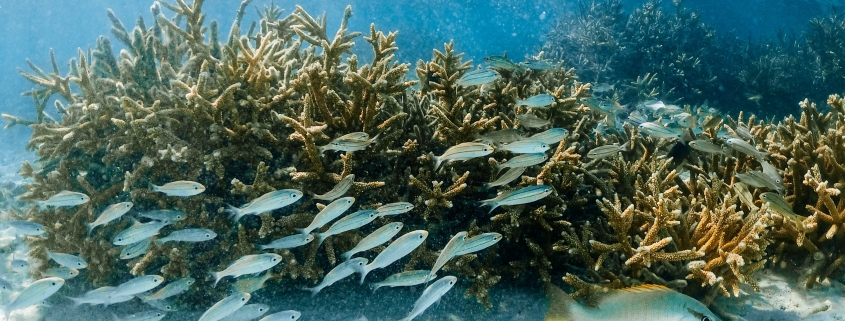Marine interdependence – From turtle hunting crabs to tongue eating louse
A camera focused on a Ningaloo Reef beach captures life and death in a marine ecosystem in its rawest form: Ghost crabs scramble to catch freshly hatched loggerhead sea turtles before sea gulls swoop in to snap up others as they stagger towards the shoreline.
Once in the water, there are new predators for the few that make it that far, but also organisms for them to eat and fuel their growth.
The footage, shot by recent PhD graduate Casper Avenent, was played to students as part of a WAMSI Thinking Blue lecture on the ‘Interdependence of organisms in marine ecosystems’ by Professor Glenn Hyndes from Edith Cowan University.
“As for the golden ghost crabs, they are possibly eaten by rays and dingoes but we don’t know”.
The scene on a small part of one Australian beach represents a much bigger ecological story.
“On this one beach at Ningaloo, there are different species of ghost crabs with very different diets,” Professor Hyndes said.
“We have found from gut analysis, the horned eyed ghost crabs feed a lot on insects and the golden ghost crabs will feed on carrion including dead rats, birds, fish, as well as turtle eggs and hatchlings.”
Professor Hyndes’ talk incorporated the many ways various species of plants and animals are interdependent and along with the video from the Exmouth area, he used an example of life along the south coast of Western Australia.
“There is algae, consumed by abalone and sea urchins, which are eaten by animals such as western blue groper. Bronze whaler sharks are consuming fish.”
One theme of Professor Hyndes’ talk was ‘Habitat Matters’.
Certain jellyfish provided shelter for juvenile fish and seagrass also played a vital role in a number of ways including giving a habitat for fish.
“The different seagrass species will be important for different fish species. For instance, the sea trumpeter fish prefer the canopy formation of the Amphibolis griffithii seagrass and blow fish are more likely to swim among the more sparce Posidonia coriacea.
Another example of interdependence was the anemone fish which can have sea louse feeding on its tongue and the inside of its mouth.
“This has a negative impact on the fish but there are cleaner wrasse fish that feed on the louse” Professor Glenn Hyndes said.
Professor Hyndes’ talk, including his slides and video footage from Ningaloo, can be found here on the WAMSI YouTube page.

